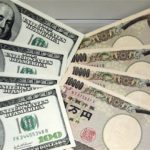US dollar climbed to its highest point during Tuesday trade against its Canadian counterpart, after an official report showed that core retail sales in the United States rose at the fastest rate in seven months in July, adding to expectations of a soon bond purchase scale back by the Federal Reserve Bank.
USD/CAD hit a session high at 1.0350 at 13:40 GMT. Support for the pair was likely to be found at August 12th low, 1.0279, while resistance was to be encountered at July 22nd high, 1.0366.
Earlier today the Department of Commerce said that retail sales in the United States rose by 0.2% in July, slowing down in comparison with Junes 0.6% increase, which was a revision up from 0.4% previously. Analysts had projected an increase by 0.3%. This implied that consumers spend cautiously during the month of July, while economy still remained weak, following its moderate performance during the spring period. This registered slower rate of increase was due to diminished purchases of automobiles, furniture and consumer electronics. In annual terms, retail sales increased by 5.4% in July, as US consumers spend more money on first necessities, clothing and sports goods. At the same time, sales in universal stores advanced at the fastest pace in over one year.
Core retail sales, which exclude automobile sales, rose by 0.5% in July compared to June, exceeding expectations of a 0.4% increase, after the revised up sales figure in June, when they increased a mere 0.1%.
To sum it up, this retail sales report showed that households in the United States remained constrained by the high unemployment rate in the country, almost unchanging remunerations and higher taxes, imposed this January.
Additionally, a separate report said that the index of import prices in the US increased for the first time in five months in July, as this result was supported mainly by higher prices of fuel. The index rose by 0.2% in July compared to a month ago, mismatching forecasts of a larger climb, by 0.8%. In June import prices dropped by 0.4% in comparison with May. Speaking in annual terms, the index advanced 1.0% in July, again below the initial estimates of a 1.5% rise. Fuel prices climbed 2.5% in July, marking their first increase since February this year. Import prices, excluding fuel, however, dropped by 0.4% in July in consonance with the overall downward tendency, observed during the recent months.
Meanwhile, Canadian currency was losing positions against the greenback for a second consecutive trading session. “The market for the time being is a little wary about the Canadian economy, based on the job prints, and I think we’re going to end up having a higher dollar/weaker Canada in the near term,” said Darcy Browne, managing director of currencies at Canadian Imperial Bank of Commerce’s CIBC World Markets unit, cited by Bloomberg. Last week it was reported that Canadian economy had lost 39 400 job positions during July compared with the 10 000 new jobs expected by analysts.
The loonie, as Canadian currency is also known, was higher against the euro, with EUR/CAD cross decreasing by 0.13% to trade at 1.3695 at 14:14 GMT. GBP/CAD pair was gaining 0.33% to trade at 1.5993 at 14:15 GMT.
Upon the release of the mixed reports out of the United States, EUR/USD pair fell to its lowest point for the day and also a one-week low at 1.3235 at 14:06 GMT. On the other hand, GBP/USD touched a session high at 1.5510 at 14:05 GMT, still supported after the UK consumer inflation report, released earlier today. Ultimately, the dollar index, tracking the performance of the greenback against a basket of six other major currencies, advanced to its highest value during trading Tuesday at 81.89 at 14:05 GMT.





